How to preserve carrots in winter
- Preparing carrots for storage.
- Optimal conditions for storing root crops.
- Preparing the cellar.
- How to store carrots in the cellar.
- How to store carrots in an apartment.
- Storing root vegetables on the balcony
- How not to store carrots.
The shelf life of carrots is not high enough; it is stored worse than beets and potatoes.The vegetable is more sensitive to storage conditions and if they change, the shelf life of carrots decreases.
Preparing root vegetables for storage
After digging up the crop and initial ventilation, it is prepared for storage. Preparation includes washing, trimming the growing point, drying and storing.
Washing. Whether or not to wash carrots is up to everyone to decide for themselves; it’s a matter of taste. Washing does not affect the storage process. Wash root vegetables in running water or in a basin, changing the water. For disinfection, you can add potassium permanganate until it turns pale pink. The solution disinfects the crop and during storage it is less susceptible to rot.
Trimming the top carried out only after washing. If the carrots have not been washed, then you cannot cut off the tops; this is a sure way to introduce an infection. Cut off the upper green end of the root crop along with the growing point. When the growth bud is removed, the carrots are immersed in deep rest, and the breathing intensity noticeably decreases. Such root vegetables are stored much better, they are less susceptible to rot and, of course, do not sprout.
Sorting. Carrots are sorted by size. Small root vegetables, as a rule, are more loose, they contain little sugar, and they wither faster during storage. Deformed specimens, despite their shape, are stored well.
Cracked, diseased, or damaged specimens during harvesting are discarded and cannot be stored. The rest of the carrots are sorted by size and stored separately. After sorting, the crop is dried under a canopy.
Drying lasts 5-10 days. This is a quarantine, during which specimens are identified that will not survive in the winter. It is advisable to dry carrots in a cool place at a temperature of 7-10°C. At higher temperatures it begins to wither.
During quarantine, the root crop develops a thick skin, sugar storage processes are actively underway, and the carrots enter a period of winter dormancy.
At the end of drying, the vegetables are sorted again and unsuitable ones are discarded, the rest are stored for the winter.
Optimal conditions for storing carrots in winter
The keeping quality of carrots directly depends on storage conditions. The winter dormancy period of the vegetable is not as deep as that of potatoes or beets, and it does not tolerate fluctuations in indicators.
- Store carrots in dark indoors. In the light, it does not go into winter dormancy, it begins to sprout and wither. Under such conditions, the sugars in root vegetables are quickly destroyed.
- Temperature should be 1-3°C. At higher values, root crops intensively evaporate water and quickly wither. If poor air circulation is added to high temperatures, the crop will rot. But there is one thing here. Root vegetables with the top removed can be stored at temperatures up to 6-8°C and even slightly higher, provided there is good ventilation. This is due to the fact that in the absence of a growth bud, the carrot plunges into deep dormancy, its breathing and evaporation of water is minimal and, of course, it cannot germinate.
- Humidity. Optimal humidity should be 85-95%. As humidity decreases and temperature rises, root crops begin to emerge from dormancy, quickly wither and germinate.
- Intensive air exchange. If circulation is poor, the moisture released by the carrots again settles on it, and the root crops rot.
If at least one indicator is violated, the shelf life of carrots decreases sharply.
Preparing a cellar for winter storage of carrots
It takes 1-1.5 months to prepare a cellar for storing vegetables in winter. Preparation includes sanitary cleaning, treatment of walls and floors, and treatment against rodents and insects.
Cleaning the cellar
They start it no later than a month before planting vegetables. The shelves are cleared of the remnants of the previous harvest, and the remaining soil is swept away. The top layer of soil (2-4 cm) is removed and thrown away. Spores of various diseases accumulate in it over the course of a year. All burrows and holes in the walls and floor are sealed.
Shelves, drawers and other wooden structures are taken out into the air to dry. Dry them in the shade (in the sun the tree may become deformed) for 20-30 days. All rotten boards are replaced with new ones. At this time, the cellar is thoroughly ventilated.
Disinfection of the premises
Every year the walls are disinfected by treating them with disinfectant solutions. The treatment is carried out even if the cellar is dry. Before treatment, ventilate for 3-4 days.
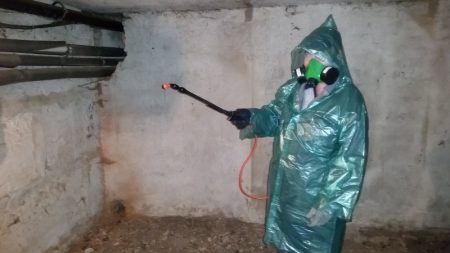
Wooden structures are treated with a 10% solution of copper sulfate. At the end of the work, the cellar is dried.
To disinfect, you can pour quicklime with water, quickly leave the cellar and do not open it for 4-6 days. The method allows you to get rid of mold and insects
Treatment against insects and rodents
To prevent rodents and insects, a sulfur bomb is set on fire in the cellar. Before this, all ventilation ducts are hermetically sealed, then the bomb is set on fire and quickly leave the room. The cellar is not opened for several days. When sulfur burns, a volatile oxide is released, which causes the death of all insects and rodents. After the due date, the ventilation is opened and the room is thoroughly ventilated.
How to store carrots in the cellar in winter
After drying the crop and cellaring, the root crops are stored. You can store carrots in the cellar in bulk, in boxes, in sand or sawdust, in moss, in onion or garlic peels. The keeping quality of carrots in the cellar is very good.
- When placed in bulk, root crops are poured onto pallets in a layer of no more than 20 cm. The shelf life with this method is 6-8 months.
- The shelf life of root crops in boxes is low - 4-6 months. Vegetables are placed in boxes, which are placed on pallets. To repel rodents, the boxes are covered with pine branches.
- In sand. Many people recommend storing crops in damp sand in winter. This is not rational, since the root crops are overly moistened and rot. In addition, when the temperature drops to 0°C, the wet sand freezes, gas exchange between the crop and the environment is disrupted and the vegetables rot. It is better to use dry sand to store carrots in winter. It is poured onto the bottom of the box, the carrots are laid out in one layer and covered with sand. Layers of carrots and sand alternate. The shelf life of root crops is 6-9 months. Dry peat can be used instead of sand.
- Vegetables are stored in sawdust in the same way as in sand, in layers, alternating them. But carrots are stored much better in sawdust - up to 1 year. Sawdust, especially coniferous wood, contains phytoncides that prevent the development of diseases.
- Carrots lie well in moss all winter. To store carrots in winter, the moss must be dry. Moss and root vegetables are laid out in layers. The material perfectly protects vegetables from excess moisture without interfering with normal gas exchange and, at the same time, protects the crop from rot. However, with a large harvest it is difficult to find such an amount of moss.
- Onion and garlic peels, as well as sawdust, contain phytoncides that prevent the development of pathogens. In addition, they absorb excess moisture well.For storage, layers of carrots are alternated with layers of peels.
Layering vegetables protects them from the spread of disease. If a vegetable is rotten in some layer, then the rot will not spread to other layers, and even to neighboring root crops
A private option for storing root vegetables in the cellar is storing carrots in the basement or underground. Here the temperature is higher, and although the humidity is high, ventilation is insufficient, so vegetables lie much worse. To increase shelf life, root crops are dipped in clay, then dried and placed in boxes. Clay reduces respiration to a minimum, and the crop can be stored at a temperature of 4-7°C.
How to store carrots in an apartment
The shelf life of vegetables in an apartment where there is no balcony is low. Long-term storage of large crops in urban conditions is impossible.
All small carrots are grated and kept in the freezer. If the harvest is large, part of it can be dried, part canned, and juice can be made from the largest root crops.
Carrots should not be stored in the refrigerator; the air circulation there is too low, and after 5-7 days they become damp and rot.
The modern method allows you to store vegetables in plastic bags without access to oxygen for a long time. A small amount of root vegetables are placed in bags and all the air is sucked out of them using a vacuum cleaner. The bags are tied and stored at a temperature not exceeding 7-9°C. But this method is only suitable for carrots whose tops have been removed. In a vacuum, breathing is reduced to zero, all vital processes almost stop and root crops are stored under such conditions for 7-9 months. If the growth bud is not removed, then it will not be possible to preserve the carrot in a vacuum. The kidney requires oxygen and in its absence the vegetable rots.
If the top of the vegetable is cut off, then in winter the carrots are stored well in the apartment in the coolest place. Root vegetables are placed in a box, covered with foam and kept in a pantry or hallway. If possible, the boxes can be taken out into the common corridor in the entrance.
Harvests processed in clay lie well in winter. But before that, it must be cooled at a temperature of +1-3°C, and then dipped in a clay solution. Clay has low thermal conductivity, and root vegetables can lie in an apartment in a cool place for 6-8 months.
It is impossible to preserve carrots in plastic bags without a vacuum. Polyethylene does not allow air to pass through, so condensation quickly forms inside. If there is insufficient oxygen, vegetables rot. At the same time, if you leave the bag indoors, the bottom carrot will rot and the top one will wither. If you put it in the refrigerator, then within a week all the root vegetables will rot.
Storing crops on the balcony
If you have a balcony, the task of preserving carrots is greatly simplified. The shelf life of vegetables in winter on the balcony is much higher than in the apartment. They are laid out in boxes and sprinkled with sawdust or sand. You can keep vegetables in boxes without pouring anything over them.
Carrots are stored well in winter in flour or sugar bags. The bags are filled 1/2-2/3 full; to absorb excess moisture, the vegetables are lightly sprinkled with ash.
When the temperature on the balcony drops to 0°C, cover the container with old rags, pillows, and blankets. If possible, you can cover it with hay. In severe frosts, in order to avoid freezing of vegetables, they are brought into the room. But you can’t keep carrots in the room for a long time; they will wither or begin to sprout. Therefore, as soon as it gets warmer, the harvest is taken out onto the balcony.It is better to insulate it properly than to keep it in an apartment.
Basic mistakes when storing carrots
Mistake #1. Too late cleaning. The plant tolerates frosts well down to -4-6°C. But in the pre-winter period, when the temperature not only at night, but also during the day is below 0°C, the vegetable freezes and does not remain in winter. It needs to be processed immediately. If the carrots are heavily overgrown with sucking white hairs, then they become woody and flabby, and there are practically no sugars in them. There is no point in storing such a crop.
Mistake #2. Storing damaged root crops for the winter. Such carrots more often rot, and from it the infection spreads to neighboring specimens. As a result, there may be significant yield losses.
Mistake #3. Storing crops in rooms where temperature and humidity vary greatly and sharply. The vegetable is extremely sensitive to microclimate; for good storage in winter it needs stable conditions. If there is a sharp change in indicators, the carrot either sprouts or rots.
Mistake #4. Keep vegetables in plastic bags. Even if the bags are not tied, condensation quickly forms inside and the root crops rot.
Mistake #5. Store carrots with apples. Apples emit ethylene, which accelerates the ripening of the crop and leads to rapid aging of the fruit. When stored together, carrots quickly wither and become woody; if the top is left, it will germinate even in cold conditions.

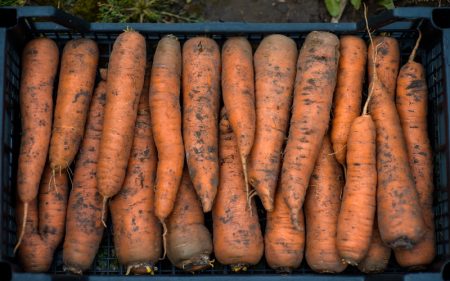
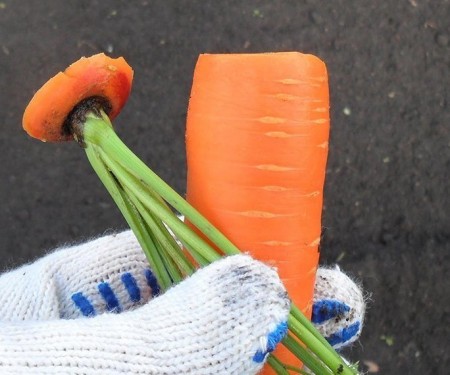
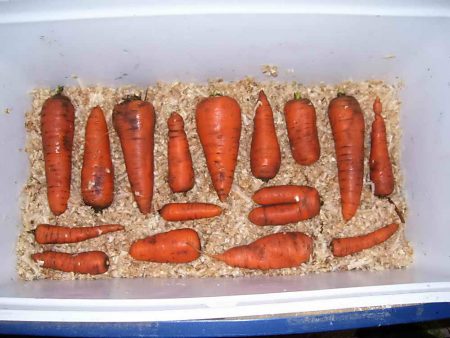
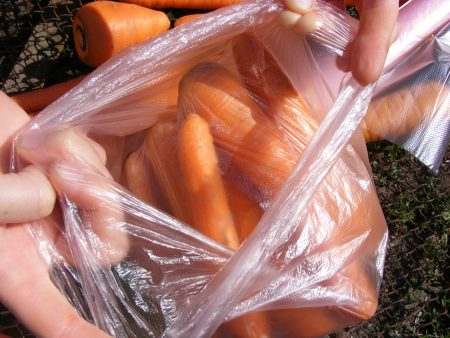

 (4 ratings, average: 4,25 out of 5)
(4 ratings, average: 4,25 out of 5) CUCUMBERS NEVER GET SICK, I'VE BEEN USING ONLY THIS FOR 40 YEARS! I SHARE A SECRET WITH YOU, CUCUMBERS ARE LIKE THE PICTURE!
CUCUMBERS NEVER GET SICK, I'VE BEEN USING ONLY THIS FOR 40 YEARS! I SHARE A SECRET WITH YOU, CUCUMBERS ARE LIKE THE PICTURE! You can dig a bucket of potatoes from each bush. Do you think these are fairy tales? Watch the video
You can dig a bucket of potatoes from each bush. Do you think these are fairy tales? Watch the video
 How our fellow gardeners work in Korea. There is a lot to learn and just fun to watch.
How our fellow gardeners work in Korea. There is a lot to learn and just fun to watch. Eye trainer. The author claims that with daily viewing, vision is restored. They don't charge money for views.
Eye trainer. The author claims that with daily viewing, vision is restored. They don't charge money for views. A 3-ingredient cake recipe in 30 minutes is better than Napoleon. Simple and very tasty.
A 3-ingredient cake recipe in 30 minutes is better than Napoleon. Simple and very tasty. Therapeutic exercises for cervical osteochondrosis. A complete set of exercises.
Therapeutic exercises for cervical osteochondrosis. A complete set of exercises. Which indoor plants match your zodiac sign?
Which indoor plants match your zodiac sign? What about them? Excursion to German dachas.
What about them? Excursion to German dachas.